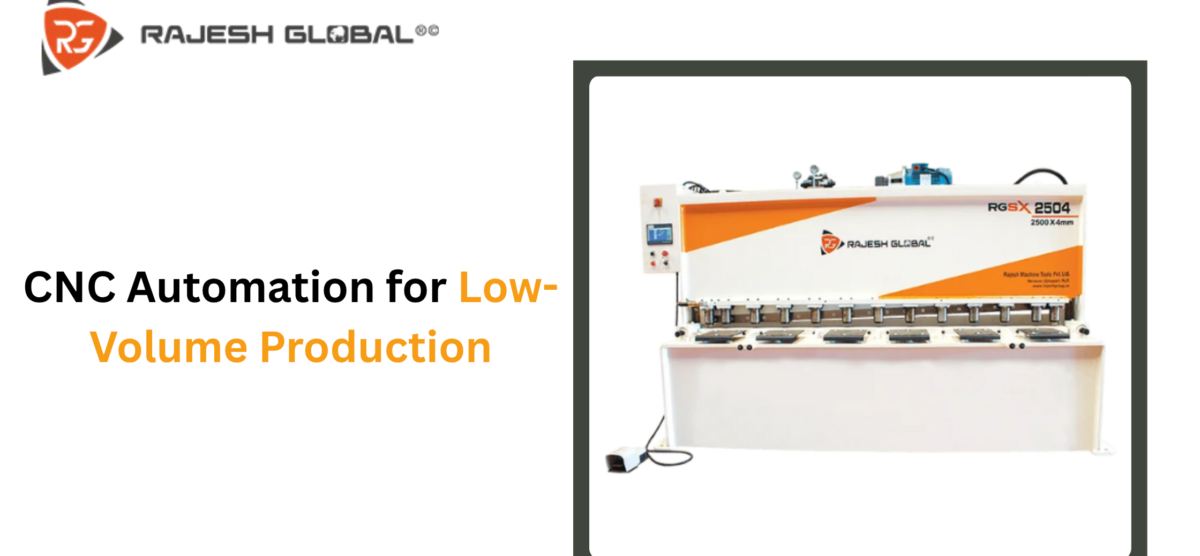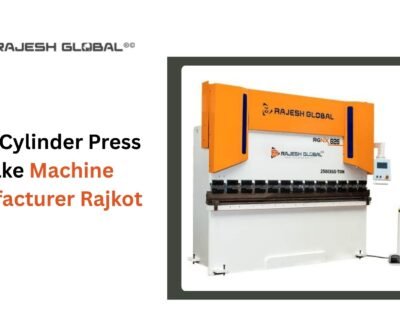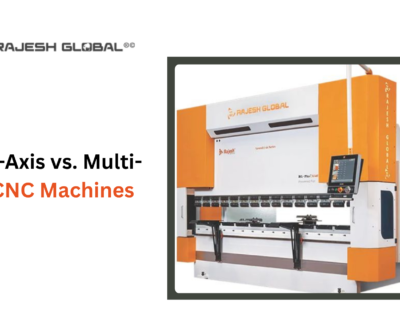Blog

CNC Automation for Low-Volume Production
In the ever-evolving landscape of manufacturing, CNC (Computer Numerical Control) automation has emerged as a game-changer, especially for low-volume production. This innovative approach allows businesses to produce small batches of high-quality parts efficiently and cost-effectively. As industries increasingly demand flexibility and rapid turnaround times, understanding the intricacies of low-volume CNC machining becomes essential for passionate amateurs and professionals alike.
This article will delve into the definition, benefits, applications, best practices, and challenges associated with CNC automation in low-volume production, all while highlighting how Rajesh CNC can support your manufacturing needs.
Understanding Low-Volume CNC Machining
Contents
Low-volume CNC machining refers to the production of a small number of components, typically ranging from 10 to 1,000 units. This method serves as a crucial transitional stage between prototyping and full-scale production, making it an essential tool for businesses looking to develop new and innovative products.
The characteristics of low-volume production include:
- Flexibility in Design Adjustments: Low-volume CNC machining allows for rapid modifications based on customer feedback or design improvements without incurring significant costs.
- Quick Turnaround Times: The ability to produce small batches quickly means that businesses can respond swiftly to market demands.
- Cost-Effectiveness: Unlike high-volume production, which often requires substantial upfront investment in tooling and equipment, low-volume production minimizes these costs while still delivering quality products.
CNC machining stands as an innovative method for swiftly generating low-volume production. Renowned for its rapid turnaround and dependability, this process has become a prevalent choice in contemporary prototype construction.
Benefits of Automation in Low-Volume CNC Machining
The advantages of implementing CNC automation for low-volume production are numerous and impactful:
Enhanced Design Flexibility
One of the standout features of low-volume CNC machining is its unparalleled design flexibility. Compared to traditional methods like injection molding or die casting, CNC machining allows manufacturers to identify and rectify design flaws at a fraction of the cost. This adaptability empowers companies to integrate customer feedback seamlessly into their product development processes, ensuring optimal client satisfaction.
Reduced Time to Market
In today’s fast-paced market, the ability to bring products to market quickly is paramount. Low-volume CNC machining significantly reduces time-to-market by enabling manufacturers to produce small batches rapidly. Using low-volume production is one way to ensure that high-quality products and parts reach the market in the shortest time possible. This agility allows businesses to stay competitive and responsive to changing consumer preferences.
Cost Efficiency
While mass production often leads to lower costs per unit due to economies of scale, the initial setup costs can be exorbitantly high for small businesses. Low-volume CNC machining eliminates many of these expenses by avoiding costly tooling investments. Low-volume machined products are cost-effective without requiring costly tooling. This financial flexibility is particularly beneficial for startups and small enterprises looking to minimize risk while testing new ideas.
Applications of Low-Volume CNC Machining
The versatility of low-volume CNC machining makes it applicable across various industries:
Aerospace
In aerospace manufacturing, precision is non-negotiable. Low-volume CNC machining allows manufacturers to produce intricate components with tight tolerances essential for aircraft safety and performance. The ability to make quick adjustments based on rigorous testing further enhances product reliability.
Medical
The medical industry also benefits significantly from low-volume CNC machining. Prototyping surgical instruments or medical devices requires precision and compliance with stringent regulatory standards. Low-volume CNC produces high-quality parts with tight tolerances and excellent surface finishes. This capability ensures that medical professionals have access to reliable tools that meet their exact specifications.
Automotive
In automotive manufacturing, low-volume CNC machining is ideal for testing different designs before committing to mass production. Automotive companies can experiment with various geometries and materials without incurring excessive costs or delays.
Best Practices for Implementing CNC Automation
To maximize the benefits of low-volume CNC machining, businesses should consider several best practices:
Choosing the Right Technology
Investing in advanced CNC machines with multi-axis capabilities can significantly enhance production efficiency. Multi-axis machining allows manufacturers to create complex geometries that would be challenging or impossible with traditional methods.
Design Considerations
When designing parts for low-volume production, it’s crucial to optimize designs for manufacturability. This includes considering material selection, tolerances, and potential manufacturing challenges early in the design process.
Collaboration with Service Providers
Selecting a reliable CNC machining partner is vital for success in low-volume production. Companies should seek partners who understand their specific needs and can provide tailored solutions that align with their business objectives.
Challenges and Solutions
Despite its many advantages, low-volume production does come with its challenges:
Balancing Quality and Cost
Maintaining high quality while keeping costs down can be difficult in low-volume production environments. However, utilizing advanced quality control measures can help ensure that each part meets stringent standards without incurring excessive costs.
Managing Production Schedules Effectively
With smaller batch sizes come unique scheduling challenges. Implementing effective project management software can streamline operations and help teams stay on track.
To address these challenges effectively, businesses should focus on continuous feedback loops throughout the design and manufacturing process. By gathering insights from stakeholders and customers regularly, companies can make informed decisions that enhance product quality while minimizing risks.
Conclusion
CNC automation for low-volume production offers unparalleled advantages for businesses seeking flexibility, efficiency, and cost savings in their manufacturing processes. From enhanced design flexibility to reduced time-to-market and high-quality outputs, this approach enables companies to navigate the competitive landscape successfully.
For passionate amateurs looking to explore the world of CNC machining or established businesses aiming to optimize their manufacturing processes, partnering with experts like Rajesh CNC can provide invaluable support. With a commitment to quality and innovation, Rajesh CNC is poised to help you turn your ideas into reality through cutting-edge low-volume CNC solutions tailored specifically to your needs.
Embrace the future of manufacturing with confidence—explore how Rajesh CNC can elevate your projects today!
FAQ
How do I get started with low-volume CNC machining as an amateur?
To get started with low-volume CNC machining as an amateur, begin by familiarizing yourself with the basics of CNC technology and its applications. Consider taking online courses or tutorials that cover CNC operation and programming. Start with simple projects to build your skills, and gradually progress to more complex designs. Additionally, invest in a user-friendly CNC machine that fits your budget and space requirements.
What are some affordable CNC machines suitable for beginners like me?
Affordable CNC machines suitable for beginners include models like the CNC3018, Shapeoko 3, and X-Carve. These machines are relatively easy to use, offer good support from user communities, and are capable of handling small-scale projects effectively. They also come with various features that allow you to experiment without a significant financial commitment.
Are there any specific design software programs that are recommended for low-volume CNC machining?
Recommended design software programs for low-volume CNC machining include Fusion 360, TinkerCAD, and Inkscape. These programs offer user-friendly interfaces and are suitable for creating designs tailored for CNC machining. Fusion 360 is particularly popular for its comprehensive features, including CAD, CAM, and simulation capabilities, making it ideal for both beginners and advanced users.







